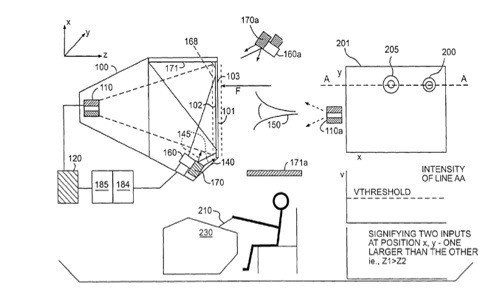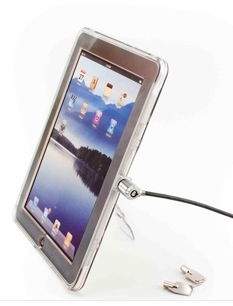An Apple patent (number 8,228,305) for a method of proving human input into a computer has appeared at the U.S. Patent & Trademark Office. The invention provides a method for providing human input to a computer which allows a user to interact with a display connected to the computer and shows that Apple continues to investigate touch technology for Macs.
The method includes the steps of placing a first target on a first portion of the user’s body, using an electro-optical sensing means, sensing data related to the location of the first target and data related to the location of a second portion of the user’s body, the first and second portions of the user’s body being movable relative to each other, providing an output of the electro-optical sensing means to the input of the computer, determining the location of the first target and the location of the second portion of the user’s body, and varying the output of the computer to the display based upon the determined locations for contemporaneous viewing by the user.
Here’s Apple’s background and summary of the invention: “The invention disclosed herein is a new type of data entry device for computers and other electronic equipment generally in the category of digitizers and touch screens having several unique properties. It is based primarily on the electro-optical determination of temporary surface distortion caused by the physical input signal, or force, creating the distortion (e.g. a finger ‘touch’). This is herein referred to as surface distortion imaging and depends on the ability to detect, and in some cases quantify, small distortions of a surface over a large (by comparison) area.
“A preferred means of detecting surface distortion is that given in reference 1, which discloses illumination of a surface and subsequent retroreflective re-illumination of the surface from which an enhanced image of the distortion in such surface are created. This method (and the products based thereon sold under the trade name ‘D-SIGHT”), is at once, simple, fast, and capable of intelligibly measuring minute distortions over large surface areas. All of these are advantages for the present disclosed invention, and D-SIGHT is the preferred method (but not the only method) for determining such distortions. Other optical techniques are grid and moire triangulation, also providing surface distortion data.
“Distortion in a material (rather than a surface thereof), can alternatively be used, detected by schlieren, transmissive D-SIGHT, and in photoelastic stress based techniques, relying on stress related differential refraction in the material, rather than deflection of the surface. In both cases video cameras scanning the image of the area of the material or surface are the preferred transduction device.
Also disclosed herein are novel means to determine other events which cooperatively or individually may a be imputed to a computer by means of the invention. These particularly concern electro-optically determinable datums on persons or other entry means.”
Timothy R. Pryor is the inventor.



